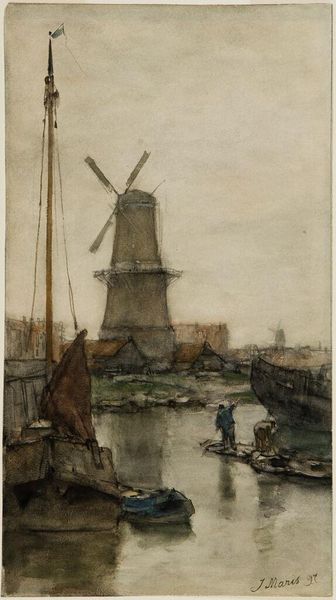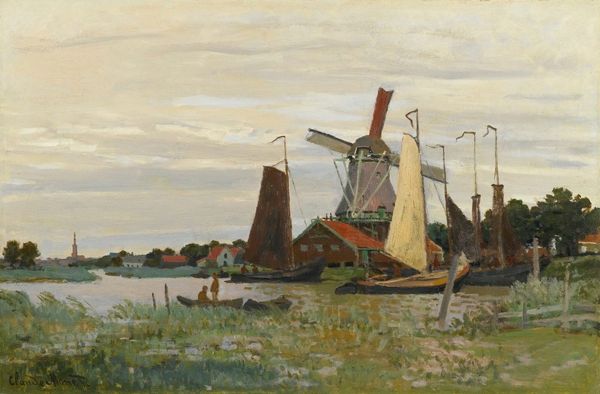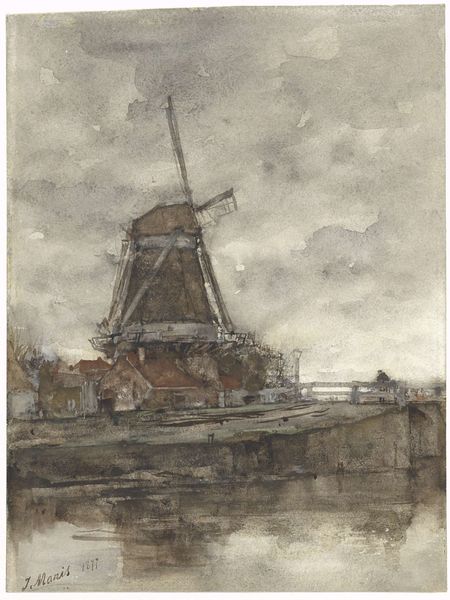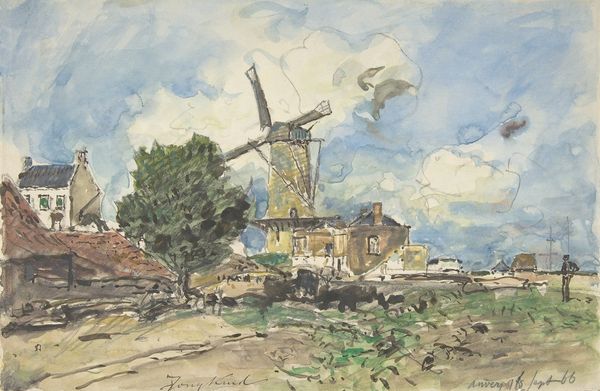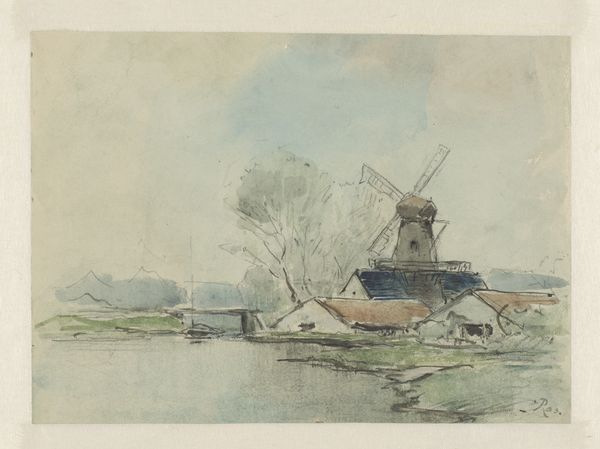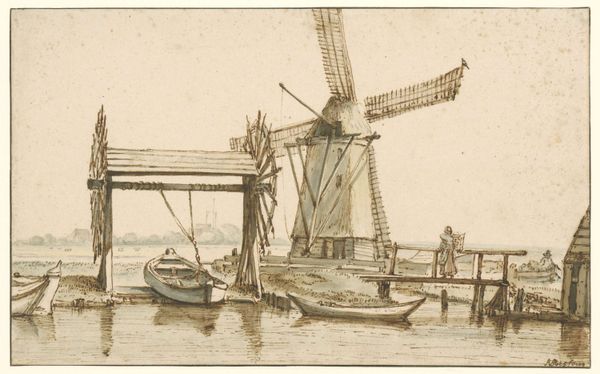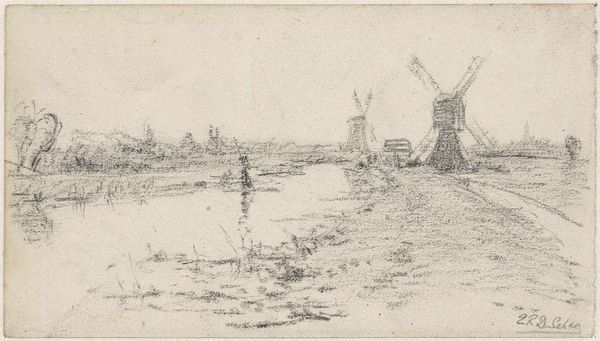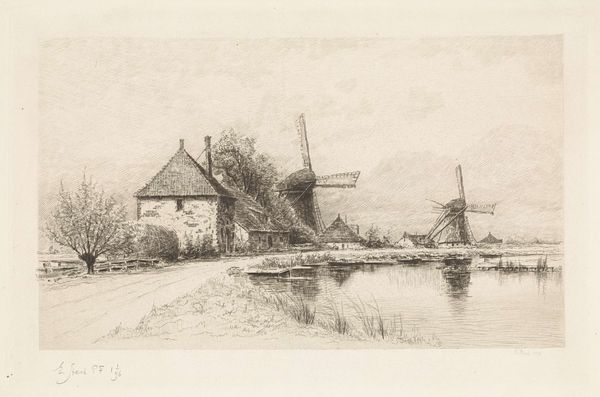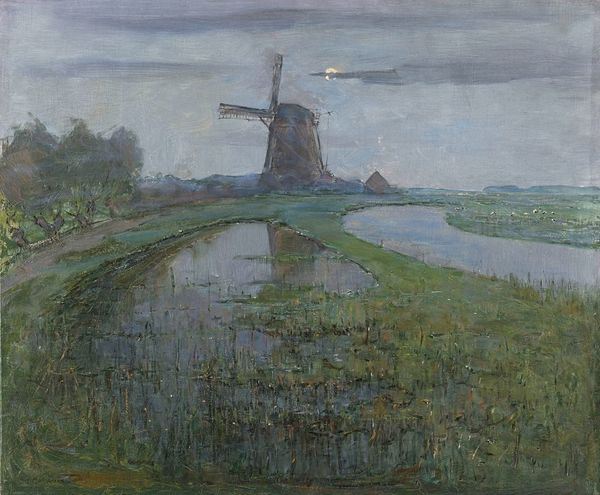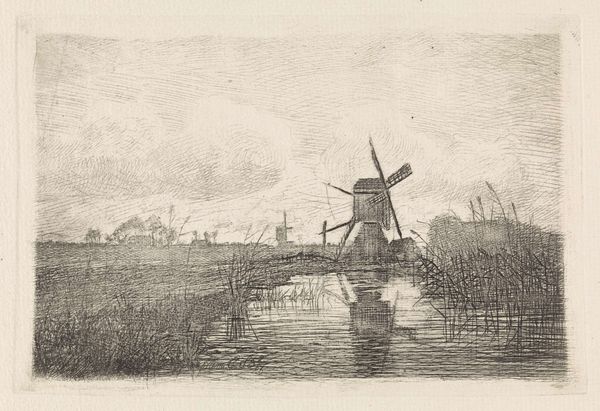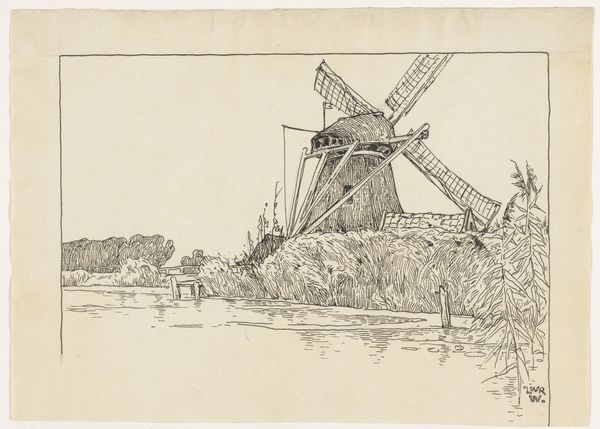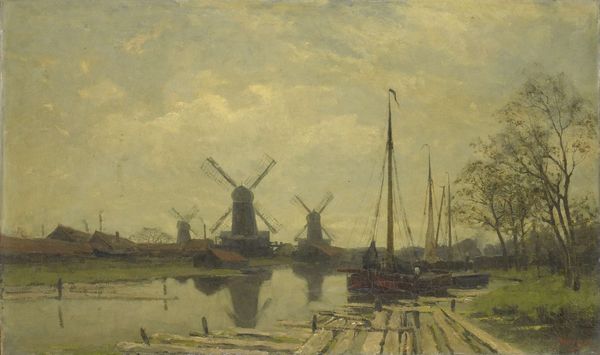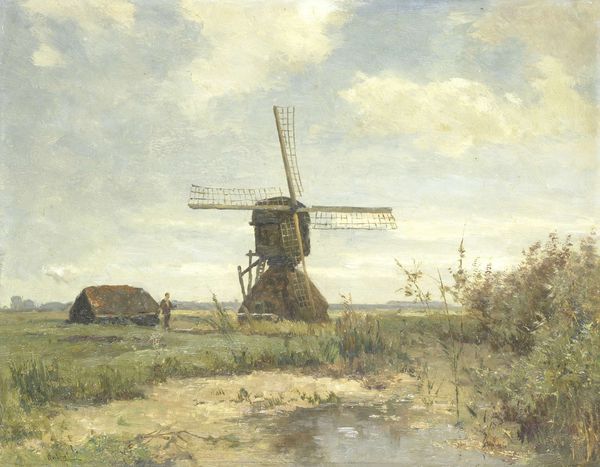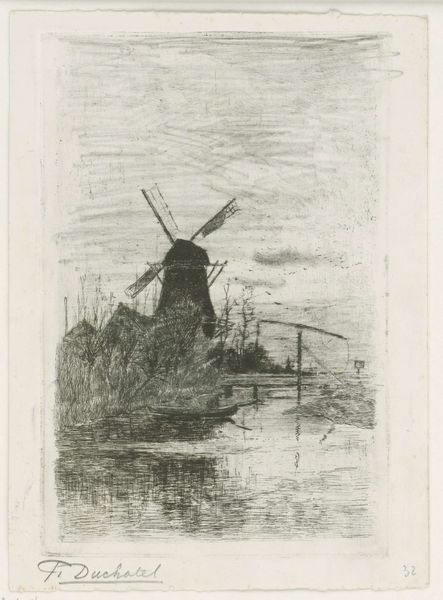
Dimensions: overall (approximate): 28.2 x 45 cm (11 1/8 x 17 11/16 in.)
Copyright: National Gallery of Art: CC0 1.0
Curator: This watercolor drawing, called "Ludham," was completed in 1920 by the Scottish artist James McBey. It offers us a glimpse into the rural landscapes that captured McBey's imagination. Editor: There's something so tranquil about this piece. It’s a bit like a half-remembered dream, all soft edges and faded blues. A breezy day in a quiet corner of the world, somewhere time seems to slow right down. Curator: McBey was indeed interested in evoking atmosphere. He blends elements of Impressionism with nods to the Dutch Golden Age landscape painting tradition, particularly in the composition with its wide skies and low horizon. Editor: You know, I see that Dutch influence in the subject matter, too – the windmills, so iconic of the Netherlands. But there's a looseness to the execution that feels so immediate, so free. The colors bleed into each other; it feels almost ephemeral. Like it could vanish any second. Curator: That feeling is characteristic of watercolor's unique challenges and rewards, its delicate nature also connects it to a long tradition of landscape painting. There’s something almost democratic about the medium. It’s portable, accessible and he uses this ease to emphasize nature's openness. Editor: You’re right about that accessibility, both literally and figuratively! Looking at it, I just want to stretch out on that bank, maybe doze off next to that slumbering figure under the upturned boat. There's a definite invitation to rest, to simply *be*. It makes you appreciate what one little brush and a bit of water can conjure up. Curator: I'm struck by how McBey balances the stillness of the scene with a sense of implied movement—the turning of the windmills, the flow of water, even the drift of those clouds overhead. This speaks to our constant negotiation with and within the environment. Editor: Yes, there's a dance between permanence and change. Looking at the materials, I notice he doesn’t confine the wash; he leaves a lot of negative space on the edges. Perhaps to say these things, in this place, never really end... They simply go on and on and on... Curator: Ultimately, "Ludham" offers more than just a pretty picture; it is a testament to the lasting impact of place on our collective consciousness. Editor: Right! I'm now pondering if our minds can ever stay in one "place," fixed, without our curiosity drawing us, splashing and sprawling out everywhere.
Comments
No comments
Be the first to comment and join the conversation on the ultimate creative platform.
